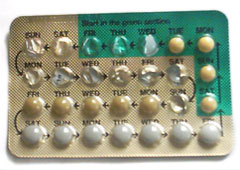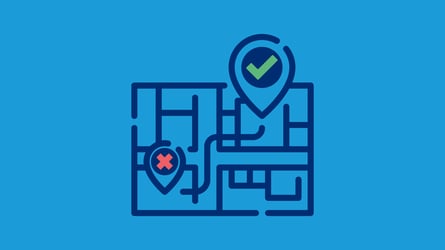Women’s health is a massive topic online. Surveys have shown that looking up health information is one of the main reasons why women use the internet. In fact, more than 80% of internet users are using the internet to get health topics, and about half say that information they find social media affects their health decisions.
In our recent report, we’ve looked at how social listening can help pharma brands track side effects, manage a crisis and find influencers. The birth control pill is one of the pillars of modern female health care and has been for almost 60 years now – so naturally we were curious about how it’s doing on social.
Between Savior and Side Effects: The Good and the Bad of the Pill
There’s no question about it: since its approval in 1960, the birth control pill has transformed women’s lives. It’s been named as one of the most important inventions of the 20th century and empowered women to take control of their fertility. Globally, more than 100 million women are using the pill. A Guttmacher Institute survey found that more than half of them use it for other reasons than birth control.
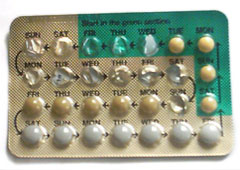
Ten years ago, Bayer’s blockbuster pill brand Yaz was one of the first to be marketed as “beyond birth control”. With annual sales topping $1bn, it was one of the most widely prescribed oral contraceptives, promising to alleviate mood swings, acne and weight gain.
When reports reached the FDA about a higher-than-usual rate of side effects in women who took Yaz, Bayer was repeatedly warned and fined for its aggressive one-solution-for-everything advertising. Since then, more than 10,000 women have filed lawsuits against Bayer citing severe Yaz side effects such as blood clots, which resulted in Bayer paying out billions in settlements.
#MyPillStory: Women Talk about their Experiences with The Pill on Twitter
These still ongoing legal battles have sparked a desire for a more open discussion about potential side effects of the pill – and social media plays a key part here. Especially with health care, there are still many taboos, but finding like-minded people through the simple use of a hashtag can help people speak about their problems in a way that wasn’t possible before.
On Twitter, a story recently developed when London woman Holly Brockwell received a lot of negative comments about her battle to get sterilised on the NHS. She said people suggested she use the pill instead, which is out of the question for her. Frustrated with the advice she got, she took to Twitter to explain that the pill is not the right solution for everybody.
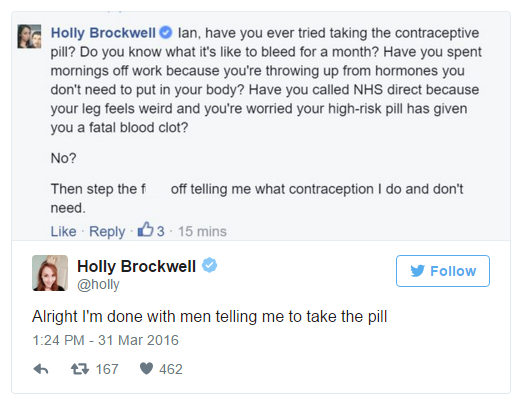
From there, a woman named Kate Bevan asked other Twitter users to share their stories in support of Holly, using the hashtag #MyPillStory. She soon received more than 500 replies. Below is a virality map that shows how her tweet spread across social networks:
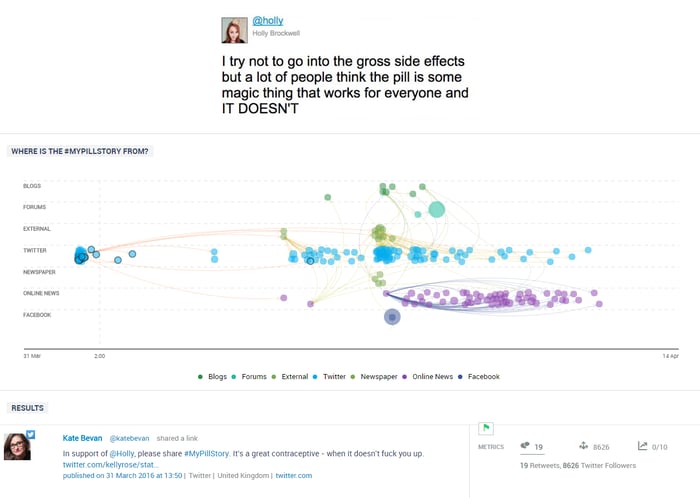
This shows how the hashtag quickly gained a lot of traction online, with more than 500 mentions on 31 March 2016. Overall, it was mentioned more than 2,300 times over the last two weeks.
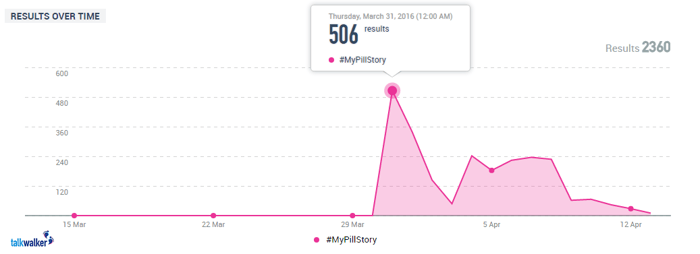
#mypillstory mentions 30D Looking at demographic data, it’s not surprising that the vast majority of the conversation came from women. In France, the story gathered momentum after being picked up by an online newspaper.
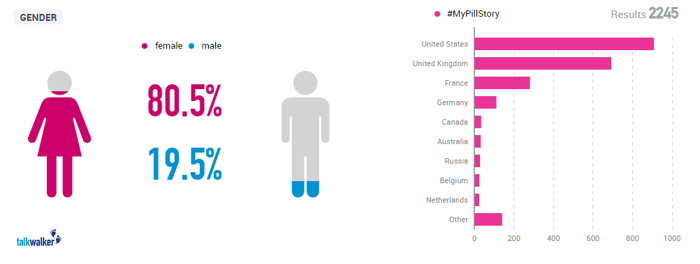
Many women shared their own stories about the pill, and soon, online editions of big women’s magazines picked up the story.
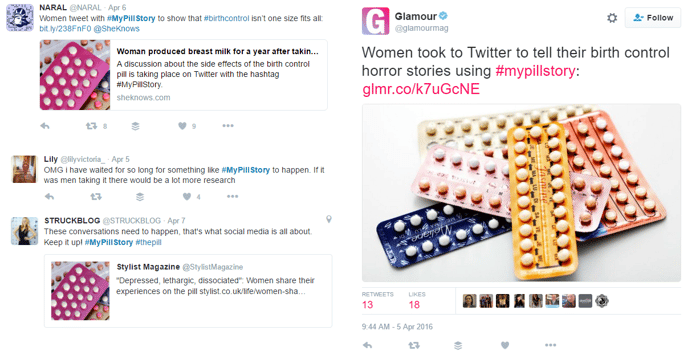
Journalists writing for women’s magazines also turned out to be the biggest influencers during the week the hashtag spread.
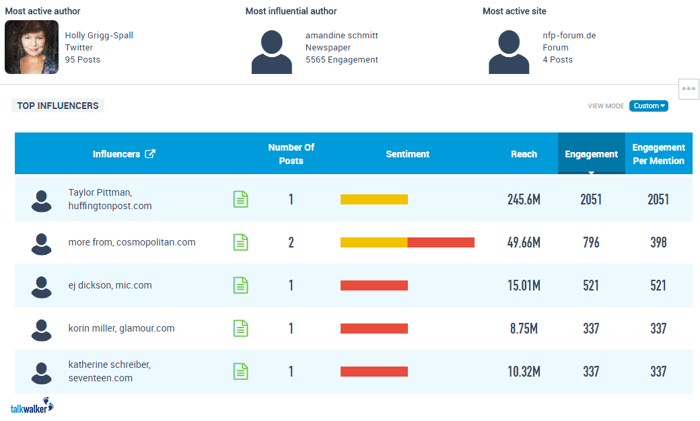
Over the course of the week, there was a lot discussion about side effects of the pill on Twitter. Comparing the share of voice for #birthcontrol and #MyPillStory shows how big the topic was in the overall discussion about birth control.
Taking a closer look at the side effects that had been mentioned with the term “the pill”, depression, mood swings and headaches were mentioned most frequently. Such data can help various departments within pharmaceutical companies to improve their products.
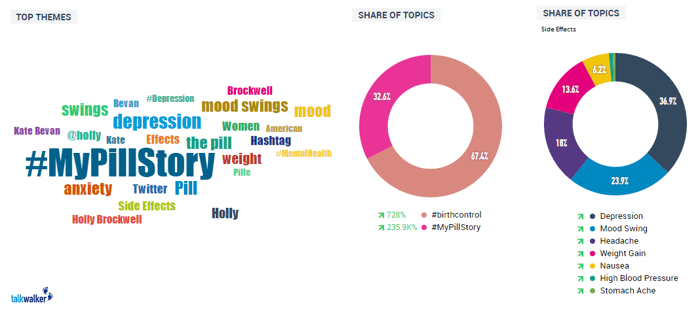
Will an App Replace The Pill?
Tracking topics like these can also give brands valuable insights when it comes to competitive intelligence. Many women recommended alternatives to the pill that had worked for them. One in particular was striking: women kept mentioning the Natural Cycles “fertility app”.
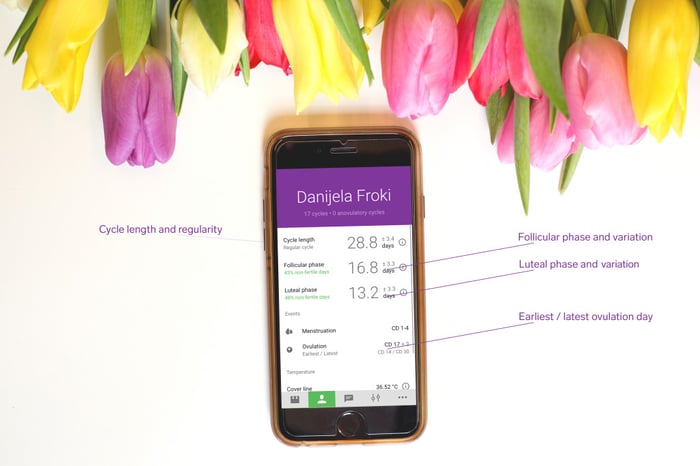
Image credit: naturalcycles.com
Recent research suggests that the app is about as effective as the pill in preventing unwanted pregnancies. It can also be used to plan a pregnancy and, unlike the pill, has no side effects. The subscription based $70-a-year app has more than 100,000 registered users and made $2 million in revenues last year.
Make the Most out of Online Discussions using Social Listening
For pharmaceutical companies, insights like these are a must-have when it comes to getting to know what their customers’ issues are. Social listening allows them to track conversations around their products and opens opportunities to take part in a discussion beyond simply advertising products.
To find out more about how to turn social data into an asset for your company, contact us today or download our How To Guide for the pharmaceutical industry - Social Listening for Pharma: How to Track Side Effects, Manage a Crisis and Find New Influencers.

